Source(Google.com.pk)
Current Female Actresses Biography
Paulette Goddard (June 3, 1910 – April 23, 1990)[1] was an American film actress. A child fashion model and a performer in several Broadway productions as a Ziegfeld Girl, she became a major star of the Paramount Studio in the 1940s. Goddard was nominated for an Academy Award for Best Supporting Actress for her performance in So Proudly We Hail! (1943).
Contents
1 Early life
2 Career
3 Later life
4 Death
5 Family
6 Legacy
Early life
Paulette Goddard was born Marion Pauline Levy in Whitestone Landing, Queens, New York. She was the only child of Joseph Russell Levy, who was Jewish, and Alta Mae Goddard, who was Episcopalian and of English heritage.[2] Her parents divorced while she was young, and she was raised by her mother. Her father virtually vanished from her life, only to resurface later in the 1930s after she became a star.[citation needed] At first, their newfound relationship seemed genial and they attended film premières together, but later he sued her over a magazine article in which she purportedly claimed he abandoned her when she was young. They never reconciled. On his death, he left her one dollar in his will. She remained very close to her mother, however, as both had struggled through those early years, with her great uncle, Charles Goddard (her grandfather's brother) lending a hand.[citation needed]
Charles Goddard helped his great niece find jobs as a fashion model, and with the Ziegfeld Follies as one of the heavily decorated Ziegfeld Girls from 1924 to 1928. She attended Washington Irving High School in Manhattan at the same time as future film star Claire Trevor.
Career
Her stage debut was in the Ziegfeld revue No Foolin in 1926, and played a small role in Rio Rita.[3] The next year she made her stage acting debut in The Unconquerable Male. She also changed her first name to Paulette and took her mother's maiden name (which also happened to be her favorite great uncle Charles' last name) as her own last name. She married an older, wealthy businessman, lumber tycoon Edgar James, in 1926 or 1927 and moved to North Carolina. Goddard returned to Hollywood in 1929, and she and James later divorced.[citation needed]
Goddard in Dramatic School (1938).
Upon her return to Hollywood, with her mother, Goddard appeared in small roles in The Girl Habit (1931) and The Mouthpiece (1932). She signed a contract with Hal Roach Studios, and appeared in films such as The Kid from Spain and Laurel and Hardy's Pack Up Your Troubles (both 1932). In 1932, she met Charlie Chaplin. Goddard was considering investing the money from her divorce settlement in a film venture but Chaplin intervened when he discovered the deal was fraudulent, and bought out her contract from Roach. Chaplin began planning a film with Goddard that was released in 1936 as Modern Times.[3] In the interim, Goddard appeared in a few films for Samuel Goldwyn Productions. Along with such actresses as Betty Grable, Lucille Ball, and Ann Sothern, Goddard became a "Goldwyn Girl" and was featured in films such as Roman Scandals (1933) and Kid Millions (1934). During this time she lived with Chaplin in his Beverly Hills home. Their marital status was a source of controversy and speculation. During most of their time together, both refused to comment on the matter.[4] Chaplin maintained that they were married in China in 1936, but to private associates and family, he claimed they were never legally married, except in common law.
publicity photo 1940s
Following the success of Modern Times, Chaplin planned other projects with Goddard in mind as a co-star, but he worked slowly and Goddard worried that the public might forget about her if she did not continue to make regular film appearances. She signed a contract with David O. Selznick and appeared with Janet Gaynor in the comedy The Young in Heart (1938) before Selznick loaned her to MGM to appear in two films. The first of these, Dramatic School (1938), costarred Luise Rainer, but the film received mediocre reviews and failed to attract an audience.[3] Her next film, The Women (1939), was a success. With an all-female cast headed by Norma Shearer, Joan Crawford, and Rosalind Russell, Goddard played the supporting role of Miriam Aarons. Pauline Kael later commented of Goddard, "she is a stand-out. She's fun."[5]
With Chaplin in The Great Dictator (1940)
Selznick had been pleased with Goddard's recent performances, and specifically her work in The Young at Heart, and considered her for the role of Scarlett O'Hara. Initial screen tests convinced him and the director George Cukor that Goddard would require coaching to be effective in the role, but that she showed promise,[6] and she was the first actress given a Technicolor screen test.[7] Russell Birdwell, the head of Selznick's publicity department, had strong misgivings about Goddard. He warned Selznick of the "tremendous avalanche of criticism that will befall us and the picture should Paulette be given this part… I have never known a woman, intent on a career dependent upon her popularity with the masses, to hold and live such an insane and absurd attitude towards the press and her fellow man as does Paulette Goddard… Briefly, I think she is dynamite that will explode in our very faces if she is given the part."[6] Selznick remained interested in Goddard and after he had been introduced to Vivien Leigh, he wrote to his wife that Leigh was a "dark horse" and that his choice had "narrowed down to Paulette, Jean Arthur, Joan Bennett, and Vivien Leigh"[8] After a series of tests with Leigh that pleased both Selznick and Cukor, Selznick cancelled the further tests that had been scheduled for Goddard, and the part was given to Leigh.[8] It has been suggested that Goddard lost the part because Selznick feared questions surrounding her marital status with Chaplin would result in scandal.[4] However, Selznick was aware that Leigh and Laurence Olivier lived together as their respective spouses had refused to divorce them,[9] and in addition to offering Leigh a contract, he engaged Olivier as the leading man in his next production Rebecca (1940).[10] Chaplin's biographer Joyce Milton wrote that Selznick was worried about legal issues by signing her to a contract that might conflict with her preexisting contracts with the Chaplin studio.[11]
Goddard signed a contract with Paramount Pictures and her next film The Cat and the Canary (1939) with Bob Hope, was a turning point in the careers of both actors. She starred with Chaplin again in his 1940 film The Great Dictator. The couple split amicably soon afterward, and Goddard allegedly obtained a divorce in Mexico in 1942, with Chaplin agreeing to a generous settlement. She was Fred Astaire's leading lady in the musical Second Chorus (1940), where she met her third husband Burgess Meredith. One of her best-remembered film appearances was in the variety musical Star Spangled Rhythm (1943), in which she sang a comic number, A Sweater, a Sarong, and a Peekaboo Bang, with fellow sex symbols Dorothy Lamour and Veronica Lake.[citation needed]
from the trailer for So Proudly We Hail! (1943)
She received one Oscar nomination for Best Supporting Actress, for the 1943 film So Proudly We Hail!, but did not win. Her most successful film was Kitty (1945), in which she played the title role. In The Diary of a Chambermaid (1946), she starred opposite Meredith, whom she soon divorced. Cecil B. DeMille cast her in three blockbusters: North West Mounted Police (1940), Reap the Wild Wind (1942) (where Goddard played a Scarlett O'Hara-type role), and Unconquered (1947).
Her career faded in the late 1940s. In 1947 she made An Ideal Husband in Britain for Alexander Korda films, being accompanied on a publicity trip to Brussels by Clarissa Churchill, niece of Sir Winston and future wife of Prime Minister Anthony Eden. In 1949, she formed Monterey Pictures with John Steinbeck. Her last starring roles were the English production A Stranger Came Home (known as The Unholy Four in the USA), and Charge of the Lancers in 1954. She also acted in summer stock and on television, including in the 1955 television remake of The Women, playing a different character than she played in the 1939 feature film. In 1964, she attempted a comeback in films with a supporting role in the Italian film, Time of Indifference, which turned out to be her last feature film. After her fourth husband Erich Maria Remarque's death in 1970, she made one last attempt at acting, when accepted a small role in an episode of The Snoop Sisters (1972) for television.
Later life
Goddard was married to actor Burgess Meredith from 1944 to 1949. She suffered a miscarriage while married to him. In 1958 she married Erich Maria Remarque, author of, among other best-sellers, All Quiet on the Western Front. They remained married until his death in 1970, and she inherited much of his money and several important properties across Europe including a wealth of contemporary art, which augmented her own long-standing collection. During this period, her talent at accumulating wealth became a byword among the old Hollywood élite. During the 1980s she became a fairly well known (and highly visible) socialite in New York City society, appearing, covered with jewels, at many high-profile cultural functions with several well-known men including Andy Warhol, with whom she sustained a friendship for many years until his death in 1987.[12]
Death
Goddard was treated for breast cancer, apparently successfully. She later settled in Ronco sopra Ascona, Switzerland, where she died after a short illness (reportedly emphysema) several months before her 80th birthday. She is buried in Ronco, next to Remarque and her mother.
Family
She had no children from any of her marriages, though she was the first step-mother to Charlie Chaplin's sons Charles Chaplin, Jr. and Sydney Chaplin whose mother was Lita Grey.
Legacy
in Modern Times (1936)
Goddard, who in her youth, missed out on an education because she had to support herself and her mother, bequeathed US$ 20 million to New York University (NYU). This was also in recognition of her friendship with the Indiana-born politician and former NYU President John Brademas. Goddard Hall, an NYU freshman residence hall on Washington Square, is named in her honor.
Efforts to raise CHF 6.2M ($7M), to purchase and save Remarque and Goddard's villa from demolition, are underway, proposing to transform the Casa Monte Tabor into a museum and home to an artist-in-residence program, focused on creativity, freedom and peace.[13]
Fictional portrayals
Goddard was portrayed by Diane Lane in the 1992 film Chaplin, and by actress Natalie Wilder in the 2011 play Puma, written by Julie Gilbert, who had also written the joint biography, Opposite Attraction: The Lives of Erich Maria Remarque and Paulette Goddard
 Current Female Actresses
Current Female Actresses
 Current Female Actresses
Current Female Actresses
 Current Female Actresses
Current Female Actresses
 Current Female Actresses
Current Female Actresses
 Current Female Actresses
Current Female Actresses
 Current Female Actresses
Current Female Actresses
 Current Female Actresses
Current Female Actresses
 Current Female Actresses
Current Female Actresses
 Current Female Actresses
Current Female Actresses
 Current Female Actresses
Current Female Actresses
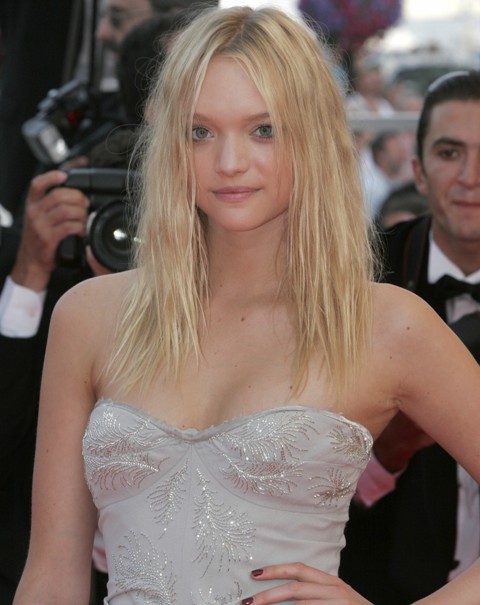 Current Female Actresses
Current Female Actresses
 Current Female Actresses
Current Female Actresses
Current Female Actresses Biography
Paulette Goddard (June 3, 1910 – April 23, 1990)[1] was an American film actress. A child fashion model and a performer in several Broadway productions as a Ziegfeld Girl, she became a major star of the Paramount Studio in the 1940s. Goddard was nominated for an Academy Award for Best Supporting Actress for her performance in So Proudly We Hail! (1943).
Contents
1 Early life
2 Career
3 Later life
4 Death
5 Family
6 Legacy
Early life
Paulette Goddard was born Marion Pauline Levy in Whitestone Landing, Queens, New York. She was the only child of Joseph Russell Levy, who was Jewish, and Alta Mae Goddard, who was Episcopalian and of English heritage.[2] Her parents divorced while she was young, and she was raised by her mother. Her father virtually vanished from her life, only to resurface later in the 1930s after she became a star.[citation needed] At first, their newfound relationship seemed genial and they attended film premières together, but later he sued her over a magazine article in which she purportedly claimed he abandoned her when she was young. They never reconciled. On his death, he left her one dollar in his will. She remained very close to her mother, however, as both had struggled through those early years, with her great uncle, Charles Goddard (her grandfather's brother) lending a hand.[citation needed]
Charles Goddard helped his great niece find jobs as a fashion model, and with the Ziegfeld Follies as one of the heavily decorated Ziegfeld Girls from 1924 to 1928. She attended Washington Irving High School in Manhattan at the same time as future film star Claire Trevor.
Career
Her stage debut was in the Ziegfeld revue No Foolin in 1926, and played a small role in Rio Rita.[3] The next year she made her stage acting debut in The Unconquerable Male. She also changed her first name to Paulette and took her mother's maiden name (which also happened to be her favorite great uncle Charles' last name) as her own last name. She married an older, wealthy businessman, lumber tycoon Edgar James, in 1926 or 1927 and moved to North Carolina. Goddard returned to Hollywood in 1929, and she and James later divorced.[citation needed]
Goddard in Dramatic School (1938).
Upon her return to Hollywood, with her mother, Goddard appeared in small roles in The Girl Habit (1931) and The Mouthpiece (1932). She signed a contract with Hal Roach Studios, and appeared in films such as The Kid from Spain and Laurel and Hardy's Pack Up Your Troubles (both 1932). In 1932, she met Charlie Chaplin. Goddard was considering investing the money from her divorce settlement in a film venture but Chaplin intervened when he discovered the deal was fraudulent, and bought out her contract from Roach. Chaplin began planning a film with Goddard that was released in 1936 as Modern Times.[3] In the interim, Goddard appeared in a few films for Samuel Goldwyn Productions. Along with such actresses as Betty Grable, Lucille Ball, and Ann Sothern, Goddard became a "Goldwyn Girl" and was featured in films such as Roman Scandals (1933) and Kid Millions (1934). During this time she lived with Chaplin in his Beverly Hills home. Their marital status was a source of controversy and speculation. During most of their time together, both refused to comment on the matter.[4] Chaplin maintained that they were married in China in 1936, but to private associates and family, he claimed they were never legally married, except in common law.
publicity photo 1940s
Following the success of Modern Times, Chaplin planned other projects with Goddard in mind as a co-star, but he worked slowly and Goddard worried that the public might forget about her if she did not continue to make regular film appearances. She signed a contract with David O. Selznick and appeared with Janet Gaynor in the comedy The Young in Heart (1938) before Selznick loaned her to MGM to appear in two films. The first of these, Dramatic School (1938), costarred Luise Rainer, but the film received mediocre reviews and failed to attract an audience.[3] Her next film, The Women (1939), was a success. With an all-female cast headed by Norma Shearer, Joan Crawford, and Rosalind Russell, Goddard played the supporting role of Miriam Aarons. Pauline Kael later commented of Goddard, "she is a stand-out. She's fun."[5]
With Chaplin in The Great Dictator (1940)
Selznick had been pleased with Goddard's recent performances, and specifically her work in The Young at Heart, and considered her for the role of Scarlett O'Hara. Initial screen tests convinced him and the director George Cukor that Goddard would require coaching to be effective in the role, but that she showed promise,[6] and she was the first actress given a Technicolor screen test.[7] Russell Birdwell, the head of Selznick's publicity department, had strong misgivings about Goddard. He warned Selznick of the "tremendous avalanche of criticism that will befall us and the picture should Paulette be given this part… I have never known a woman, intent on a career dependent upon her popularity with the masses, to hold and live such an insane and absurd attitude towards the press and her fellow man as does Paulette Goddard… Briefly, I think she is dynamite that will explode in our very faces if she is given the part."[6] Selznick remained interested in Goddard and after he had been introduced to Vivien Leigh, he wrote to his wife that Leigh was a "dark horse" and that his choice had "narrowed down to Paulette, Jean Arthur, Joan Bennett, and Vivien Leigh"[8] After a series of tests with Leigh that pleased both Selznick and Cukor, Selznick cancelled the further tests that had been scheduled for Goddard, and the part was given to Leigh.[8] It has been suggested that Goddard lost the part because Selznick feared questions surrounding her marital status with Chaplin would result in scandal.[4] However, Selznick was aware that Leigh and Laurence Olivier lived together as their respective spouses had refused to divorce them,[9] and in addition to offering Leigh a contract, he engaged Olivier as the leading man in his next production Rebecca (1940).[10] Chaplin's biographer Joyce Milton wrote that Selznick was worried about legal issues by signing her to a contract that might conflict with her preexisting contracts with the Chaplin studio.[11]
Goddard signed a contract with Paramount Pictures and her next film The Cat and the Canary (1939) with Bob Hope, was a turning point in the careers of both actors. She starred with Chaplin again in his 1940 film The Great Dictator. The couple split amicably soon afterward, and Goddard allegedly obtained a divorce in Mexico in 1942, with Chaplin agreeing to a generous settlement. She was Fred Astaire's leading lady in the musical Second Chorus (1940), where she met her third husband Burgess Meredith. One of her best-remembered film appearances was in the variety musical Star Spangled Rhythm (1943), in which she sang a comic number, A Sweater, a Sarong, and a Peekaboo Bang, with fellow sex symbols Dorothy Lamour and Veronica Lake.[citation needed]
from the trailer for So Proudly We Hail! (1943)
She received one Oscar nomination for Best Supporting Actress, for the 1943 film So Proudly We Hail!, but did not win. Her most successful film was Kitty (1945), in which she played the title role. In The Diary of a Chambermaid (1946), she starred opposite Meredith, whom she soon divorced. Cecil B. DeMille cast her in three blockbusters: North West Mounted Police (1940), Reap the Wild Wind (1942) (where Goddard played a Scarlett O'Hara-type role), and Unconquered (1947).
Her career faded in the late 1940s. In 1947 she made An Ideal Husband in Britain for Alexander Korda films, being accompanied on a publicity trip to Brussels by Clarissa Churchill, niece of Sir Winston and future wife of Prime Minister Anthony Eden. In 1949, she formed Monterey Pictures with John Steinbeck. Her last starring roles were the English production A Stranger Came Home (known as The Unholy Four in the USA), and Charge of the Lancers in 1954. She also acted in summer stock and on television, including in the 1955 television remake of The Women, playing a different character than she played in the 1939 feature film. In 1964, she attempted a comeback in films with a supporting role in the Italian film, Time of Indifference, which turned out to be her last feature film. After her fourth husband Erich Maria Remarque's death in 1970, she made one last attempt at acting, when accepted a small role in an episode of The Snoop Sisters (1972) for television.
Later life
Goddard was married to actor Burgess Meredith from 1944 to 1949. She suffered a miscarriage while married to him. In 1958 she married Erich Maria Remarque, author of, among other best-sellers, All Quiet on the Western Front. They remained married until his death in 1970, and she inherited much of his money and several important properties across Europe including a wealth of contemporary art, which augmented her own long-standing collection. During this period, her talent at accumulating wealth became a byword among the old Hollywood élite. During the 1980s she became a fairly well known (and highly visible) socialite in New York City society, appearing, covered with jewels, at many high-profile cultural functions with several well-known men including Andy Warhol, with whom she sustained a friendship for many years until his death in 1987.[12]
Death
Goddard was treated for breast cancer, apparently successfully. She later settled in Ronco sopra Ascona, Switzerland, where she died after a short illness (reportedly emphysema) several months before her 80th birthday. She is buried in Ronco, next to Remarque and her mother.
Family
She had no children from any of her marriages, though she was the first step-mother to Charlie Chaplin's sons Charles Chaplin, Jr. and Sydney Chaplin whose mother was Lita Grey.
Legacy
in Modern Times (1936)
Goddard, who in her youth, missed out on an education because she had to support herself and her mother, bequeathed US$ 20 million to New York University (NYU). This was also in recognition of her friendship with the Indiana-born politician and former NYU President John Brademas. Goddard Hall, an NYU freshman residence hall on Washington Square, is named in her honor.
Efforts to raise CHF 6.2M ($7M), to purchase and save Remarque and Goddard's villa from demolition, are underway, proposing to transform the Casa Monte Tabor into a museum and home to an artist-in-residence program, focused on creativity, freedom and peace.[13]
Fictional portrayals
Goddard was portrayed by Diane Lane in the 1992 film Chaplin, and by actress Natalie Wilder in the 2011 play Puma, written by Julie Gilbert, who had also written the joint biography, Opposite Attraction: The Lives of Erich Maria Remarque and Paulette Goddard
Current Female Actresses















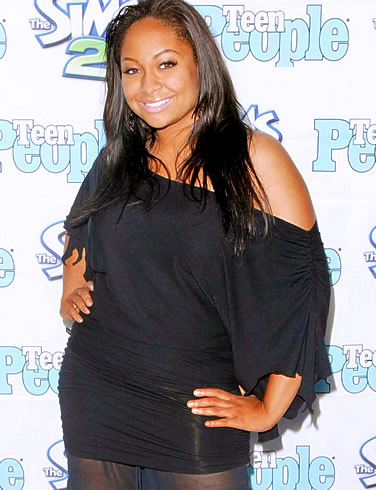


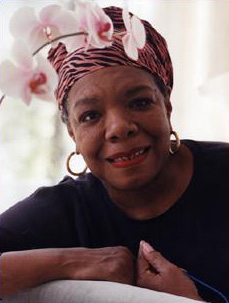











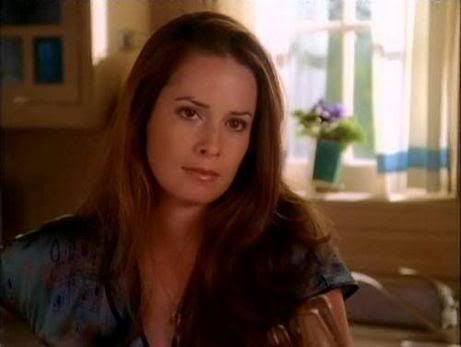







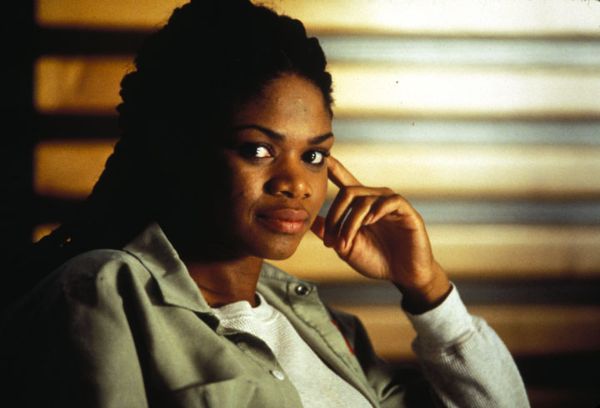




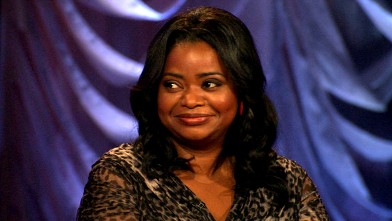






.jpg?m=1338548289)




